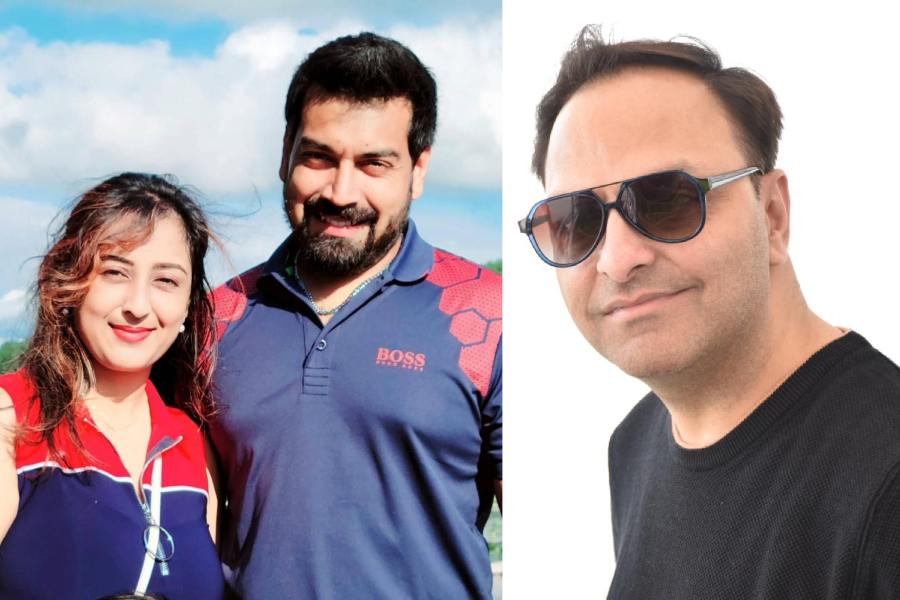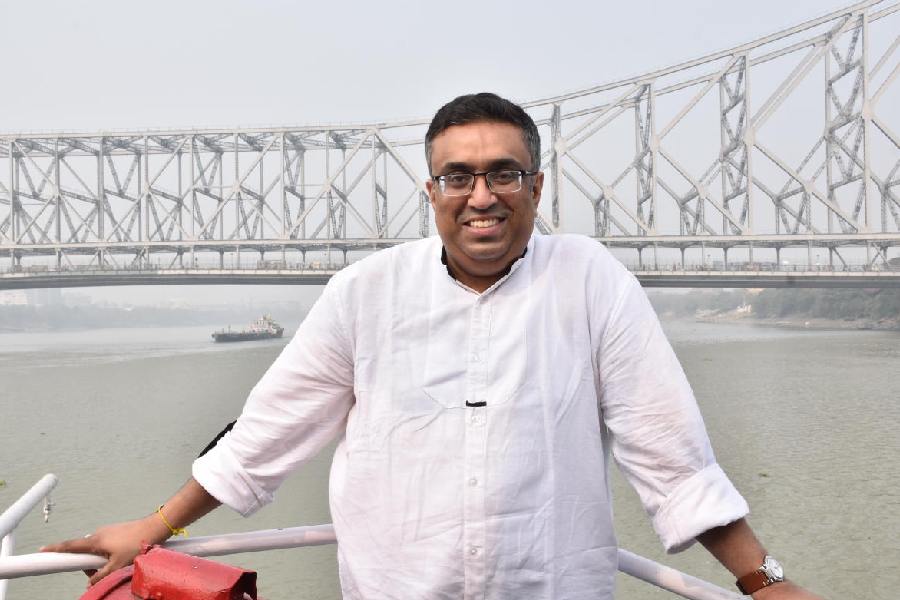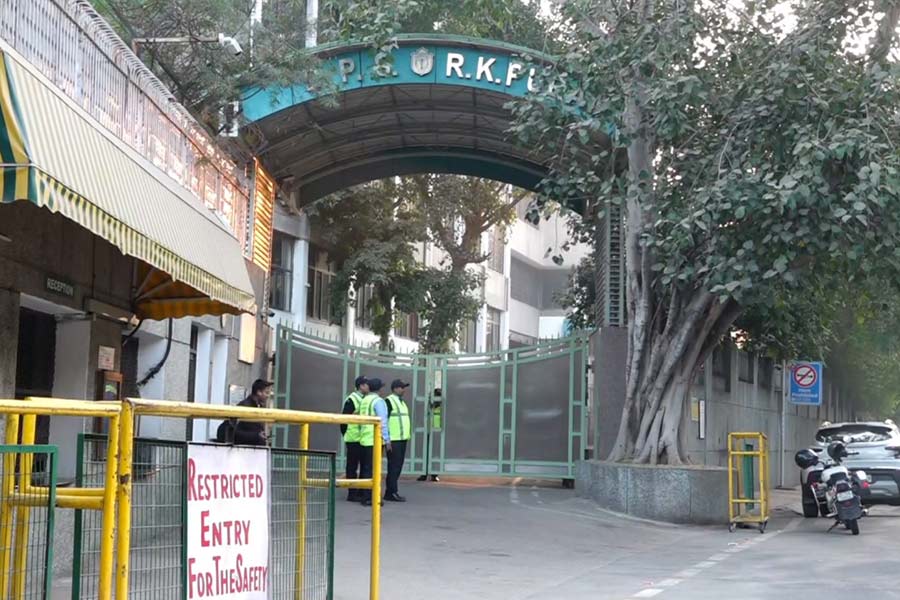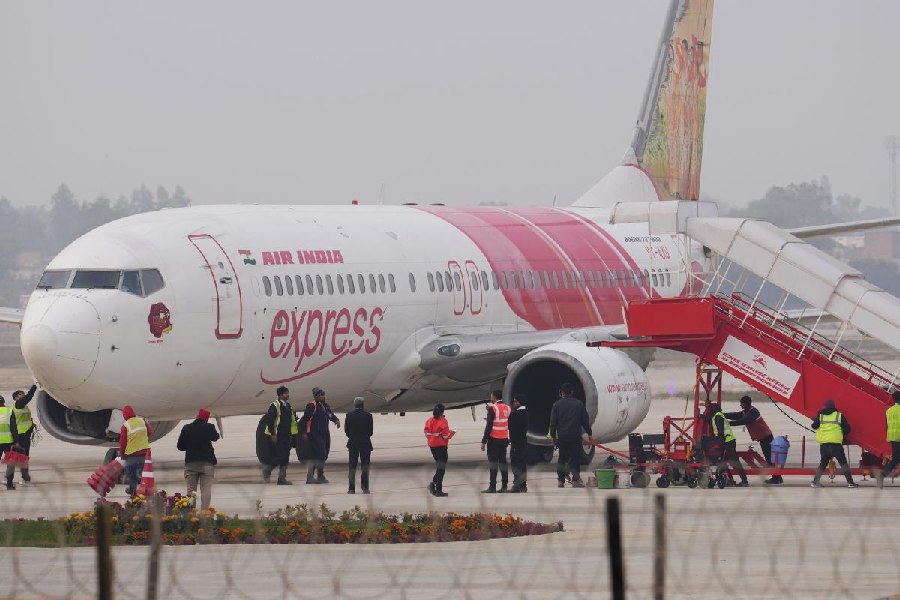Raajhorshee De’s upcoming film Sada Ronger Prithibi is all set for release in the theatres tomorrow. Based on the important issue of widow trafficking in India, the film is a socio-political narrative in the form of a thriller. Shot in Varanasi and Calcutta, it will feature 19 actors from the big and small screens as cast members. Produced by Shrravonii Paul and Sushant Sengupta and presented by Amit Agarwal, the film will highlight the plight of the widows and the crimes committed against them. Last week, a part of the cast and crew took a barge ride on the Ganges for the promotion of the film. Glimpses from the ride and a post-shoot t2 chat with the director:
Sada Ronger Prithibi is releasing tomorrow. Are you excited or nervous?
I am nervous. Nervous because it is a political film. I am growing old in a country where people have mixed up religion and spirituality. I think the term secular is getting obsolete here. This film is my protest against theocratic anarchy.
Tell us about the inception of this film.
My friends Shrravonii and Sushant from Iowa wanted to stand for a cause, and we decided to make a film on widow trafficking. Being a widowed woman is still a punishment in certain parts of India and is considered a sin. She is restricted from living a normal family life and must live in an ashram or shelter home. Throughout the country, many widows still travel to Kashi and Vrindavan because this age-old custom demands so. In 2012, the Supreme Court addressed this issue. According to the Home Ministry’s National Crime Bureau of India, violence against women is the fastest-growing crime. So, it was important for us to tell this story. Without Shrravonii and Sushant, this film would have never been possible. I am immensely grateful to them.
Why did you choose the thriller genre to make the film?
We seek to understand, but we’re also empathetic, so an emotionally driven story is something we can connect with. Thrillers play on emotions a lot of us don’t experience every day. So, we felt that by narrating the subject as a thriller, we could make people feel connected to the subject quicker, and the format would allow us to question and answer those questions.
Has working with a huge cast ever been a challenging situation for you?
I love working with so many actors. Some of them have debuted in films with me. It is always a great adrenaline rush to have so many actors around. Srabanti (Chatterjee), for the first time, will be seen in a double role and she is a powerhouse in the film, Sauraseni (Maitra) has never been seen portraying such a character, a stupendous director and actor like Arindam Sil, a great actor like Rwitobroto (Mukherjee), a politician like Ananya Banerjee debuting in my film with a such a pivotal character, Sneha Chatterjee, Devlina Kumar, Richa Sharma, Sohini Guha Roy, Oindrila Bose and so many others. People compare me with J.P. Dutta or Manmohan Desai, which I enjoy. But I hope this is my last film with so many cast members. The next one will have a very limited cast.
You told us during the shoot of this film in Benaras that you spent a part of your childhood in that city. How did you capture it through your visual storytelling?
Varanasi is one of the most attractive destinations in India and has been the city of moksha for centuries. It has also been popular as an abode of Lord Shiva. With its temples and ghats, this city is one of the best places in India to spend some time in serenity and to get that much-needed peace of mind and soul. The scenic aura and the charm of this city have been a motivation for writers and filmmakers. Sada Ronger Prithibi is my tribute to Joy Baba Felunath, which had Maganlal Meghraj. And in this film, we have Karunananda and Bhabani, who are more brutal and more socio-political antagonists.

Shrravonli Paul and Sushant Sengupta (left); Amit Agarwal (right)
What kind of research went into the making of the film?
According to some age-old traditions, a widow could not remarry. She had to hide in the house, remove her jewellery and wear the colour of mourning. She became a source of shame for her family, lost the right to participate in religious life and became socially isolated. According to ancient customs, women who lost their husbands, even child brides, would be banished to a life of chastity and deprivation. When we researched, we found out that research documents that the average age for widowhood is 32.2 years. Again, the mean age for those widowed/widower by age 70 is 56.1 years and 58.5 years, respectively. As widows move through their own experiences of grief, loss, or trauma after the death of a spouse, they may also face economic insecurity, discrimination, stigmatisation, and harmful traditional practices based on their marital status. All these aspects have inspired the narrative.
You are also acting in this film. Which one is closer to your heart, directing or acting?
I always enjoy acting. But I have realised how difficult it is to direct and act in the same film. I salute Anjan Dutt, Arindam Sil and Kaushik Ganguly, who can do both tasks with utter mastery. But my assistants were superb and they have helped me a lot to achieve this.
Tell us about one memorable shot from the film that you enjoyed filming.
Srabanti’s action sequences and her being a villain are the scenes I enjoyed the most. There is also a chase sequence with Sauraseni, Richa and Rwitobroto in the famous lanes of Varanasi. I also loved Sneha’s intense scenes.
What are your hopes with Sada Ronger Prithibi?
I have made the film with a brilliant team. Plus, my presenter, Amit Agarwal, who has produced great films, also has very high hopes for this film. So, I have also started gaining confidence gradually.
What kind of films would you like to do in future?
I want to do travelogues with girls and I want to remake a Bengali classic. I have never done a comedy, too. I plan to do a sequel of Abar Kanchanjungha in a very different way, with Darjeeling as the backdrop. Also, Bratya Basu’s famous adaptation of Hamlet called Hemlat: the Prince of Garanhata is in the pipeline.











